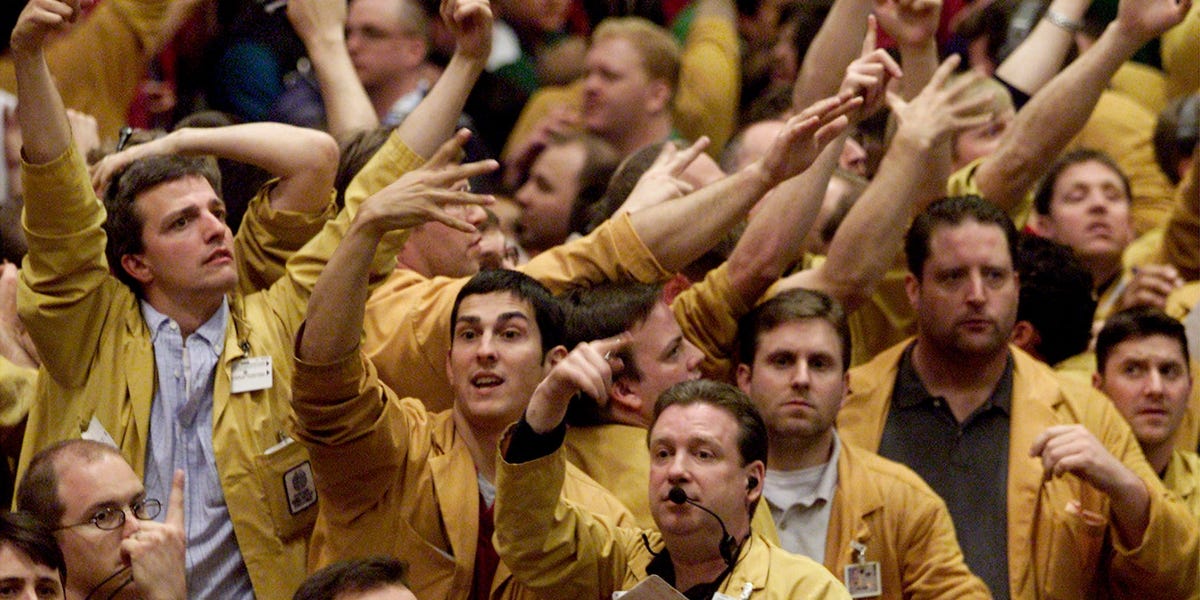- Oman buys stake in Elon Musk’s AI company xAI
- Vor Bio Secures $55.6M Investment Led by Reid Hoffman, Extends Runway for Key 2025 Trial Results
- Peter Lynch Shares Timeless Investment Rules: ‘You Can Always Lose What You Have Invested, Even If A Stock Is Cheap’
- Advocate Health Care investing $1B on South Side in Trinity Hospital, new facility at Illinois Quantum and Microelectronics Park
- Millions in bonds for Israel put US states at odds with investment policies | Israel-Palestine conflict News
- US stock valuations are high, but Lazard’s Ron Temple is bullish on future returns.
- Temple cites US innovation and economic strength as key factors for a positive stock outlook.
- Temple also sees opportunities in emerging markets outside China and in Japanese stocks.
Yes, US stock valuations are high. Yes, that will dampen forward returns to a degree, especially relative to the last decade. No, we won’t see the paltry 0%-3% returns over the next 10 years that some of the biggest banks on Wall Street are warning of.
You are viewing: Lazard’s Chief Strategist: 3 Investments for 2025 and Beyond
So goes the thinking of Lazard Asset Management’s Ron Temple. The $247 billion firm’s chief market strategist still counts US stocks among the investment opportunities he’s most bullish on in 2025 and beyond.
That’s partly thanks to the ongoing strength of the US economy and the country perhaps benefiting from foreign investors seeking stability amid geopolitical uncertainty. But a major factor is the innovation that US companies drive.
“The innovation engine in the US is incredible,” Temple told BI. “The US is still in the lead on AI. I think we’re a global leader in healthcare innovation. There’s so much innovation coming out of this economy, I think it’s unwise to be bearish on US equities, full stop.”
See more : Sportsbank enter exclusivity to invest in John Textor’s Eagle Football ownership group
Temple sees 7%-8% annualized returns over the next decade. In the near term within the US, energy and financials stocks should have an upside given that they’d get a boost from deregulation and corporate tax cuts that could come under the incoming Trump administration, he said.
But Temple highlighted a couple of opportunities outside the US as well.
First, emerging markets ex-China are trading at discount valuations, and could be set to become even cheaper if Trump’s trade policy ends up being more hardline than investors expect. The iShares MSCI Emerging Markets ex China ETF (EMXC) trades at a 16.8 trailing 12-month PE ratio, while the S&P 500 sits just below a 30 PE ratio.
Another reason Temple likes EMs outside of China is the growing polarization of China and the US, and the worsening investment climate in China that’s starting to develop.
“Over the last 15 to 20 years, all the foreign direct investment into EM went into China,” he said. “In the last five quarters, we’ve now had three quarters of negative FDI in China.”
See more : Will gold prices rise in 2025 and how can you invest?
He continued: “I think what you’re going to see over the next decade is a significant reallocation away from China into other EMs that are more closely aligned with the US and Europe.”
Second, Temple likes Japanese stocks, which trade at similar valuation levels to EM ex-China. He said the country’s economic situation should continue to improve.
“Japan still has the structural problems and demographics and too much debt that they had years ago,” Temple said. “But when I look at Japan, I think we’re really in the early innings of a normalization around inflation and wages.”
Japan should also benefit from the US-China trade war as well, Temple said. His bullish outlook extends over the next three-to-five years.
“It’s a trusted ally,” Temple said. “People are happy to source sophisticated technological equipment from Japan as a safe provider.”
The Matthews Japan Active ETF (JPAN) and the iShares MSCI Japan ETF (EWJ) are examples of funds that offer exposure to Japanese stocks.
Source: https://magnacumlaude.store
Category: News

